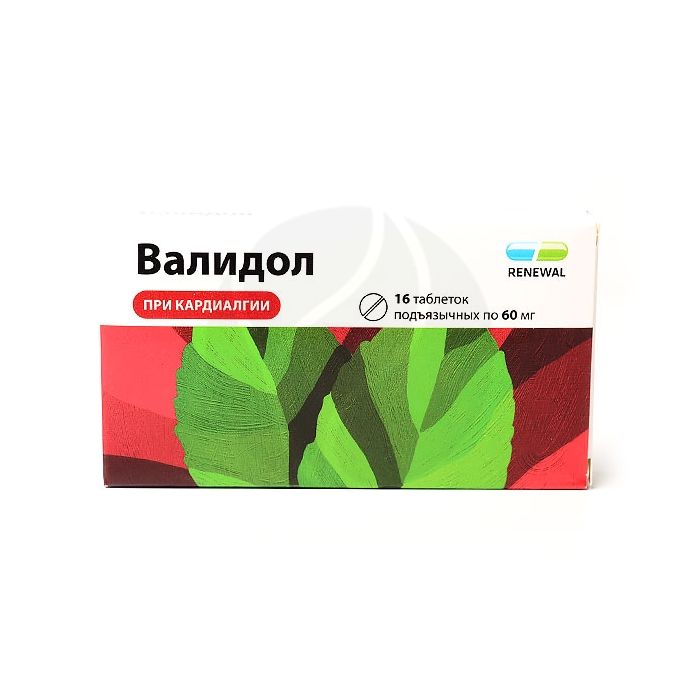Validol tablets 60mg, No. 16
Expiration Date: 05/2027
Russian Pharmacy name:
Валидол таблетки 60мг, №16
Functional cardialgia, neuroses, as an antiemetic for sea and air sickness.
The method of application and dosage regimen of a particular drug depends on its form of release and other factors. The optimal dosage regimen is determined by the doctor. It is necessary to strictly observe the compliance of the used dosage form of a particular drug with the indications for use and the dosage regimen.
Sublingual, 2-3 times / day. The frequency and duration of admission is determined depending on the effectiveness of the treatment. In the absence or insufficient severity of the therapeutic effect in the next 5-10 minutes after administration, another therapy must be prescribed.
Levomenthol solution in menthyl isovalerate (validol) - 60 mg
Hypersensitivity to the active substance, age up to 18 years.
Sublingual tablets
Composition:
Active substance:
levomenthol solution in menthil isovalerate (validol) - 60 mg
Clinical and pharmacological group: A drug with a reflex vasodilating effect
Pharmaco-therapeutic group: Coronarodilating agent of reflex action
pharmachologic effect
Coronarodilator of reflex action, causes sedation. The reflex vasodilating effect is due to irritation of the sensitive nerve endings. Stimulates the production and release of enkephalins, endorphins and a number of other peptides, histamine, kinins (due to irritation of mucosal receptors), which are actively involved in the regulation of vascular permeability, the formation of pain.
Dextrose (if present in the composition of the dosage form used) is phosphorylated in tissues with the formation of glucose-6-phosphate, which is actively involved in various metabolic processes.
With sublingual administration, the therapeutic effect occurs on average after 5 minutes, while up to 70% of the active substance is released within 3 minutes.
Pharmacokinetics
With sublingual administration of levomenthol, the solution in menthil isovalerate is absorbed from the oral mucosa. It is metabolized in the liver and excreted by the kidneys in the form of glucuronides.
When using dosage forms containing dextrose (glucose), the latter is completely absorbed by the body; It is not excreted by the kidneys (appearance in the urine is a pathological sign).
Indications
Functional cardialgia, neuroses, as an antiemetic for sea and air sickness.
Dosage regimen
The method of application and dosage regimen of a particular drug depends on its form of release and other factors. The optimal dosage regimen is determined by the doctor. It is necessary to strictly observe the compliance of the used dosage form of a particular drug with the indications for use and the dosage regimen.
Sublingual, 2-3 times / day. The frequency and duration of admission is determined depending on the effectiveness of the treatment. In the absence or insufficient severity of the therapeutic effect in the next 5-10 minutes after administration, another therapy must be prescribed.
Side effect
Possibly: nausea, watery eyes, dizziness, allergic reactions.
Contraindications for use
Hypersensitivity to the active substance, age up to 18 years.
Application during pregnancy and lactation
Application during pregnancy and lactation (breastfeeding) is possible if the expected benefit of therapy to the mother outweighs the potential risk to the fetus.
special instructions
If necessary, the use of dosage forms containing dextrose (glucose) requires caution.
Simultaneous alcohol intake is not recommended.
Influence on the ability to drive vehicles and mechanisms
When using, patients should be careful when driving vehicles and other potentially hazardous activities that require increased concentration of attention and speed of psychomotor reactions.
Drug interactions
With simultaneous use with drugs that have a depressing effect on the central nervous system, an increase in their action is observed.

